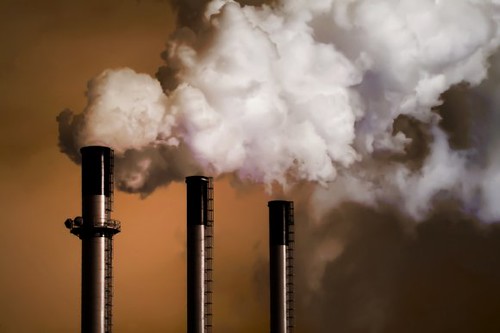This article from the publication, Scientific American, is very interesting and worth your time to read. Below are a few quotes from the article....make sure to read the comments at the end of the article and follow the links they suggest.
"Sequestration, as envisioned in the report, involves capturing the CO2 from coal-fired power plants, compressing it into a liquid and injecting it deep beneath the earth into old oil fields or saline aquifers. There, according to geologists, the CO2 would be trapped by sealing cap rock to prevent it from seeping back to the surface and into the air. It is relatively cheap to get it there, the report says. The difficulty is capturing it at the power plant without sapping too much energy or pushing electric costs up too high. For example, one 500-megawatt coal-fired power plant (there are the equivalent of 500 of these in the U.S. and China is building the equivalent of two of them each week) produces three million tons of CO2 annually. Adding carbon capture technology to that plant sucks up 40 percent of the power it can produce and adds at least 2.7 cents to the retail price of that electricity."
"If you capture most of the CO2 and sequester it for the 50-year life of the plant, you're talking about one billion barrels of supercritical CO2," Moniz says. "That's a pretty big reservoir."
"To date, the largest sequestration project—the Sleipner gas field in the North Sea—slurps up one million tons of CO2 per year (11 million or so since inception) and relies on sonar to detect any major leaks. "So far, so good," says Howard Herzog, principal research engineer at M.I.T.'s Laboratory for Energy and the Environment. "The problem with Sleipner is it's not as instrumented as we would like."
In other words, it does not have the kind of in-place monitoring systems critical to understanding the true workings of liquid CO2 stored underground.
Nor is it big enough to help understand what would happen if even larger amounts of supercritical CO2 were pumped underground. In fact, it would take 3,600 projects of Sleipner's scale—which is the largest such project underway—to reduce current carbon dioxide emissions from coal by less than half, the report says. But even the small projects are already turning up surprises, such as the relative permeability of various rocks and the ability of CO2 to mix with saline and form carbonic acid, which eats away surrounding rock. And, of course, no one knows exactly how long the carbon dioxide could be contained. "The long-term, chemical fate of CO2 remains to be understood," Moniz notes. "It's like a mortgage. It gets us out of the problem in the 21st century, spreading it out over a longer time and not breaking the budget."
Click here to be taken to the entire article
One of the comments for this article -
"If carbon sequestration requires 40% of the electric power
produced by the plant, this is a "no-win" strategy.
I've worked as a consultant for fossil fueled plants, and
know that the present SO2/NOX/Precipitator power /Ash Handling
usage already requires 15% of the power plants output.
If you add 40% more to this, the plant is using 55% of the
energy it produces for internal requirements. Considering that coal fired plants only have a 40%
efficiency to start with because they must first convert
the chemical energy of coal to steam energy, then the
steam to electrical energy; the carbon sequestration
process is a losing proposition." David M ClemenClick here to access the comments to the above article - then scroll down


